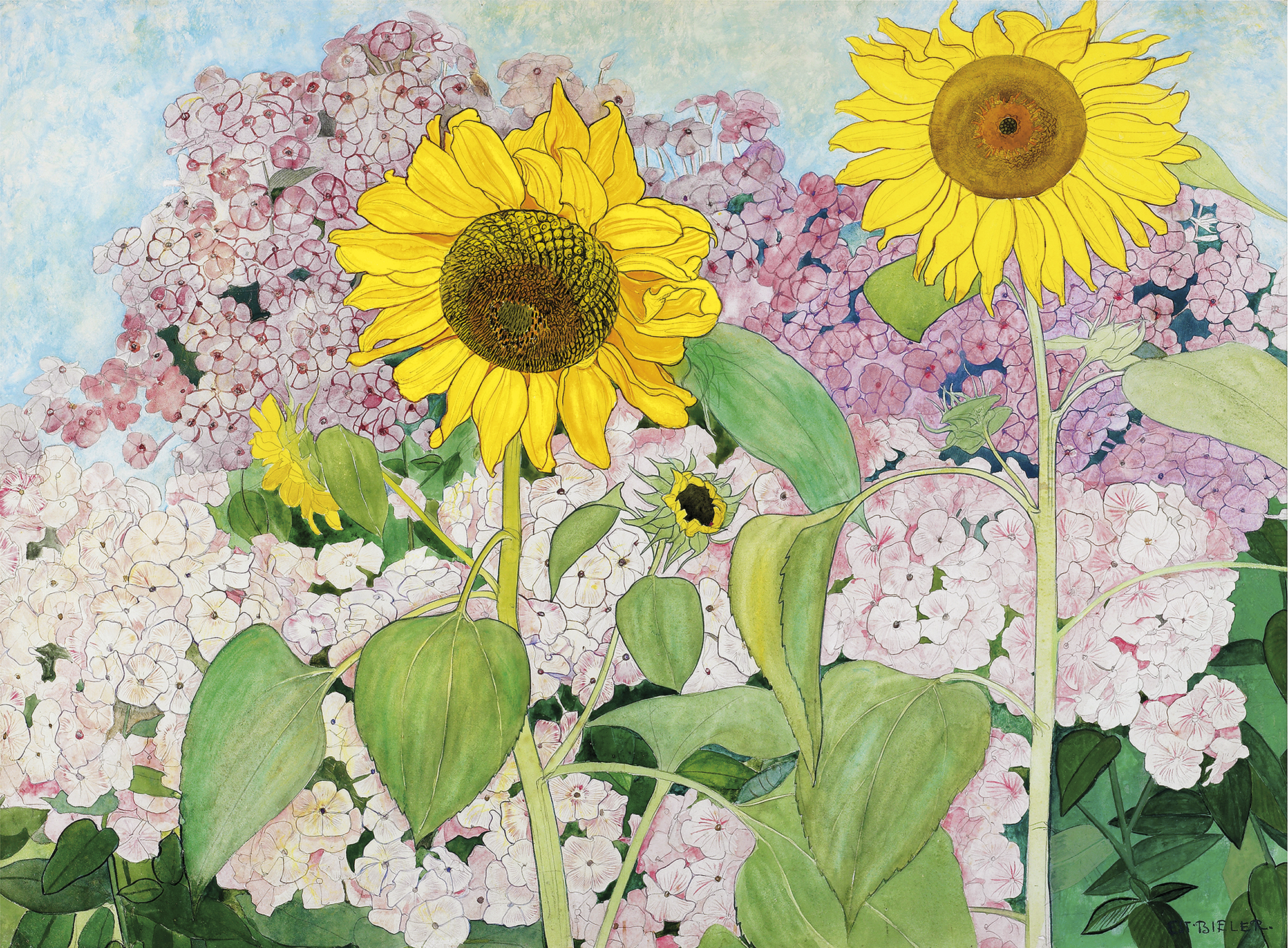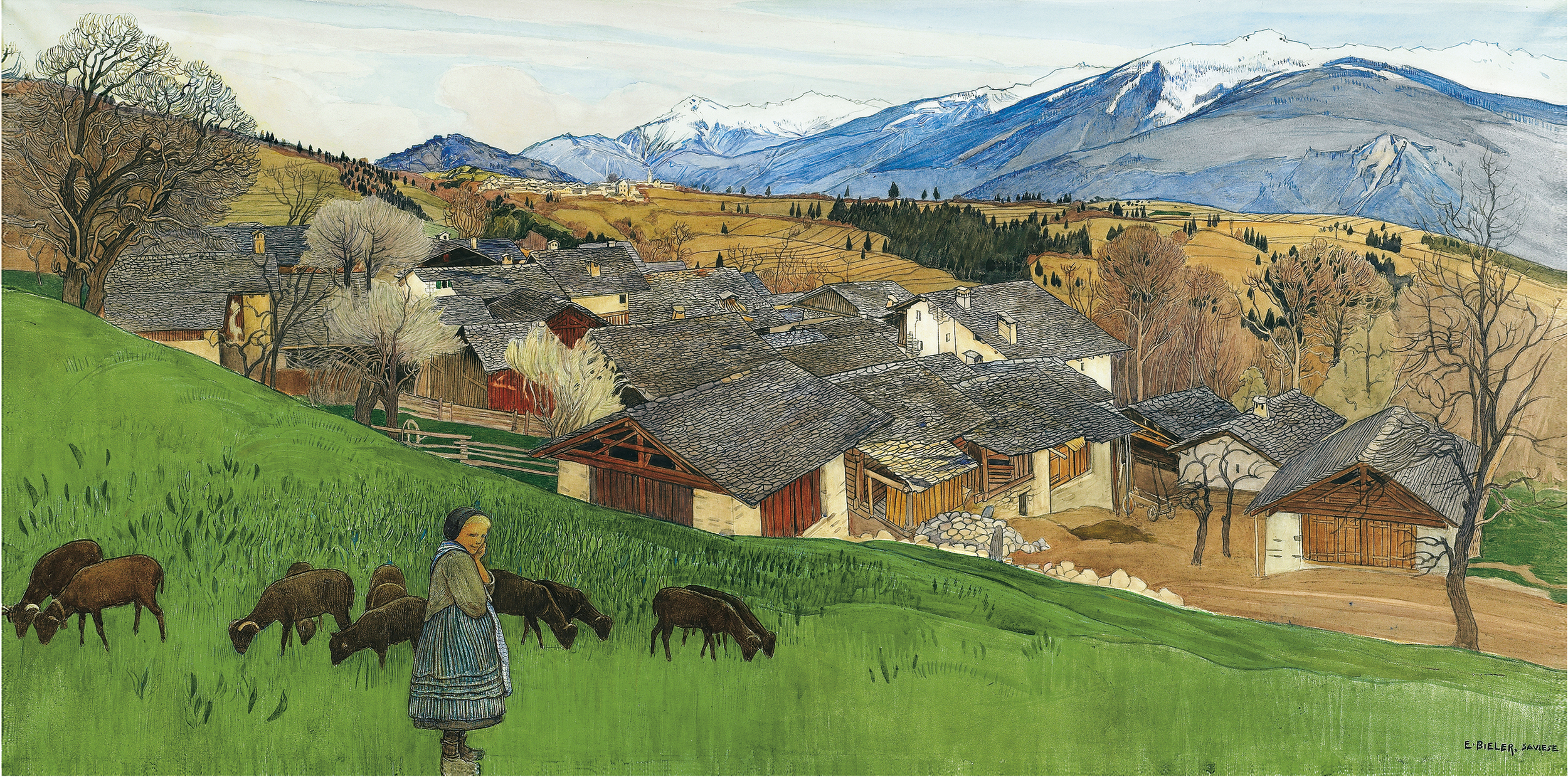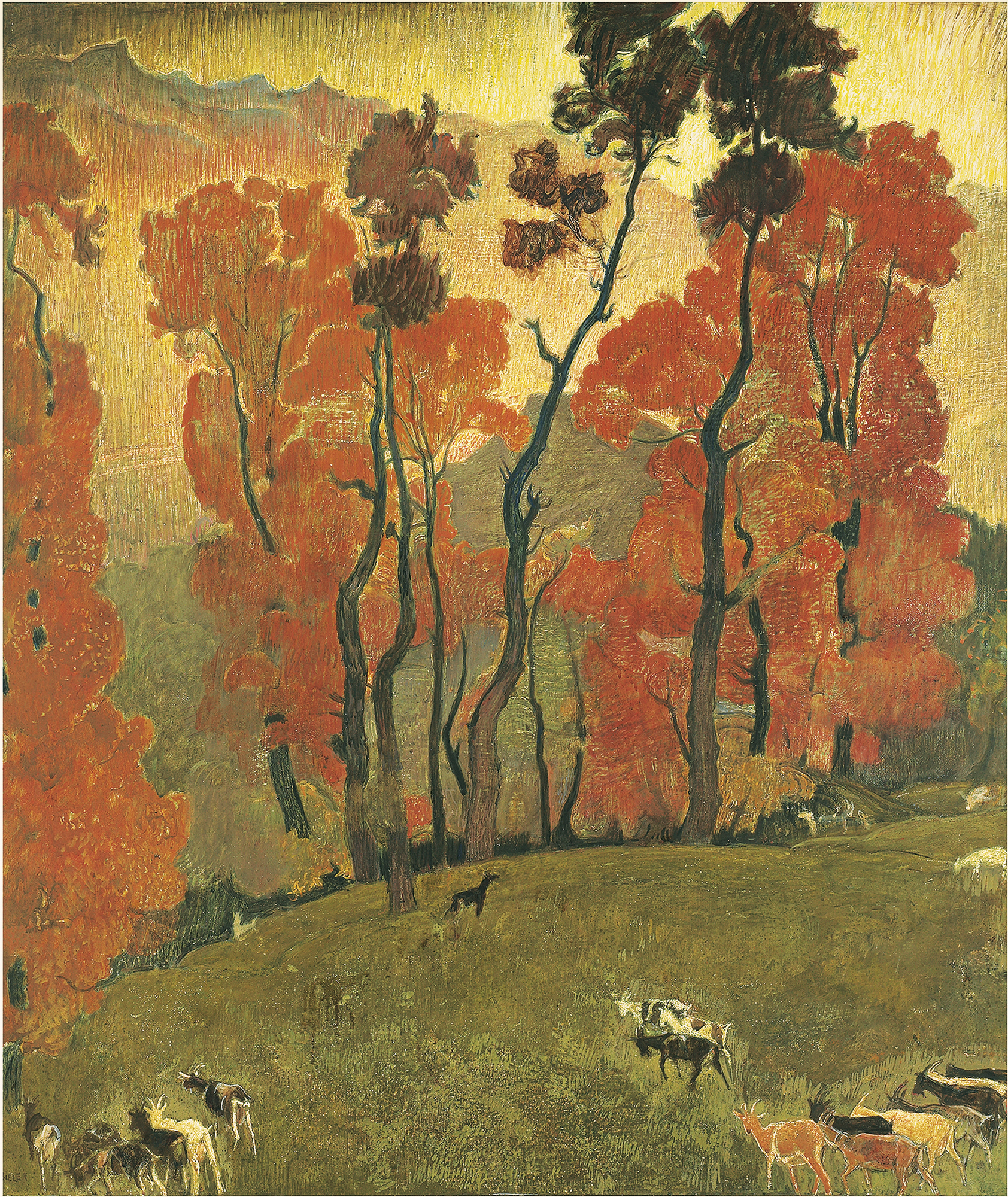Born in 1863 in Rolle, Ernest Biéler left for Paris at the age of seventeen to study in the city’s art schools. He works under the influence of impressionism at first and paints an initial masterpiece that causes quite a stir at the 1889 World’s Fair (Pendant la messe à Saint-Germain en Savièse – During the Mass in Saint-Gemain in Savièse, 1886), the picture’s subject being inspired by a stay in the Canton of Valais. Illustrating the novels of Emile Zola, Alphonse Daudet and Victor Hugo – over and above the few portrait commissions that come in – makes it possible for him to live in the French capital.
In 1900 Biéler returns to Switzerland, settles in Valais and helps to develop the School of Savièse. He gradually abandons oil painting for tempera, which allows him to cultivate a more graphic style, and turns towards Art Nouveau.
A painter and illustrator, he also makes a name for himself working in stained glass and mosaic. In 1917 he sets up shop in a vast studio in Montellier near Rivaz and begins producing the great decorative works that will ensure him lasting fame. He creates stained-glass windows for churches (Saint Francis, Lausanne; Saint Martin, Vevey; Saint Germain, Savièse), mounted-canvas ceilings (Victoria Hall, Geneva; Theatre of Bern) and frescoes (Jenisch Museum, Vevey; the main hall of the Greater Council, Sion).
Biéler is the poet of rural Valais and is often seen in his own lifetime as lacking personality for not adhering to the period’s avant-garde movements. But this position allows him to adapt his style to the variety of decorative commissions he is awarded and doesn’t stop him from being honoured with a range of distinctions. The designer of the sets and costumes for Vevey’s 1927 Fête des vignerons, the grand celebration of wine and wine making held only once every twenty-five years, occupies a unique position amongst the important Swiss artists of the first half of the 20th century.
In 1900 Biéler returns to Switzerland, settles in Valais and helps to develop the School of Savièse. He gradually abandons oil painting for tempera, which allows him to cultivate a more graphic style, and turns towards Art Nouveau.
A painter and illustrator, he also makes a name for himself working in stained glass and mosaic. In 1917 he sets up shop in a vast studio in Montellier near Rivaz and begins producing the great decorative works that will ensure him lasting fame. He creates stained-glass windows for churches (Saint Francis, Lausanne; Saint Martin, Vevey; Saint Germain, Savièse), mounted-canvas ceilings (Victoria Hall, Geneva; Theatre of Bern) and frescoes (Jenisch Museum, Vevey; the main hall of the Greater Council, Sion).
Biéler is the poet of rural Valais and is often seen in his own lifetime as lacking personality for not adhering to the period’s avant-garde movements. But this position allows him to adapt his style to the variety of decorative commissions he is awarded and doesn’t stop him from being honoured with a range of distinctions. The designer of the sets and costumes for Vevey’s 1927 Fête des vignerons, the grand celebration of wine and wine making held only once every twenty-five years, occupies a unique position amongst the important Swiss artists of the first half of the 20th century.


